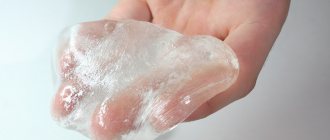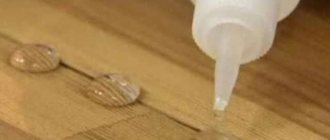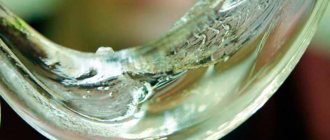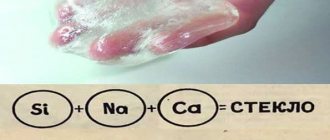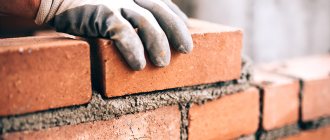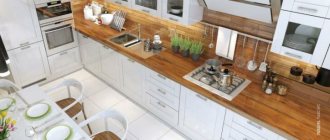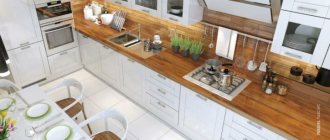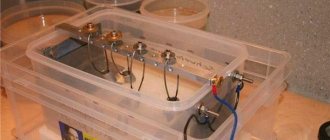Liquid glass in construction is often used to protect surfaces from moisture and give additional strength to the coating. Glass is inexpensive and easy to apply with a brush or roller. In this regard, many people come up with the idea of combining painting with the application of liquid glass. This can be done by using paint based on liquid glass.
They are sold ready-made and are called silicate paints. They usually use potassium glass because it is stronger. These paints are used for both exterior and interior decoration. You can prepare this paint yourself by adding the desired color to a solution of liquid glass. It turns out beautifully and economically, because liquid glass is inexpensive.
What is liquid glass
Liquid glass is a silicate-based adhesive. Recently, you can often find that treating a body with polish is called liquid glass. The remedies actually vary.
When the material dries, a layer is created that does not allow liquids and air to pass through. In liquid form, it penetrates well into the surface to close all pores.
When the material dries, a layer is created that does not allow liquids and air to pass through.
Fire resistance of silicate paints
One of the main features of liquid glass-based paints is their fire resistance. Such decorative coatings belong to the class of non-flammable paints.
Their peculiarity is that when dry, these paints form a film that has fire-retardant functions. Paints made from potassium liquid glass are considered to be of the highest quality and resistant to fire.
Typically, non-flammable paints, in addition to glass, also contain special fillers that are highly fire-resistant. It can be ground fluffed or not vermiculite, talc, perlite, kaolin wool fibers, asbestos (fluffed).
Such paints are often supplied in double packaging: a separate mixture of fillers, pigments, additives, etc., and the actual packaging with liquid glass. The paint must be mixed before use. After this, it can only be used for 12 hours.
The characteristics of strength, fire resistance and vapor permeability possessed by paints based on liquid glass have made them indispensable for fire-resistant painting of walls of any premises, creating curtains with fire-retardant properties for cinemas and theaters. These paints will increase the fire safety of any wooden building. In short, when using these paints you will get not only a stylish, but also a safe building.
The arrangement of the garage does not end after the walls and roof are installed. A lot of finishing work remains to be done to make the garage sufficiently functional and comfortable. One such job is painting the concrete floor in the garage, which will be discussed in this article.
Features, characteristics and composition of liquid glass
Sodium or potassium silicate is introduced into the base; microcrystals, which are responsible for closing the structure of the material, and quartz sand are also added. Coloring is not used, because coloring leads to deterioration of properties, and the seam will not be beautiful. A good waterproofing result is obtained due to the technical characteristics of the product:
- Moisture-repellent property;
- Antiseptic protection;
- Antistatic effect;
- High level of curing;
- Protective property against the harmful effects of alkaline acid substances;
- Fire resistance.
Coloring is not used, because coloring leads to deterioration of properties, and the seam will not be beautiful.
The main pros and cons of liquid glass
The choice of whether to treat a surface with liquid glass is easier when the positive and negative aspects of the process are known. The following advantages of the material can be noted:
- Creating a film that does not allow moisture to pass through;
- High level of adhesion, penetration into any surface cracks;
- Economical consumption, can be added to cement mortar;
- Reasonable cost;
- Long service life;
- Resistant to a variety of substances.
The presence of a large number of advantages does not exclude the disadvantages:
- Incompatible with all materials, can only be applied to concrete and wood;
- The layer is brittle, additional product should be applied on top;
- It is not possible to apply over another finishing material; paints and varnishes do not adhere to it;
- Carrying out the application requires special skills; it is almost impossible for a beginner to do the job with his own hands;
- The product cannot be tinted.
The product dries very quickly, so the work requires a fast pace from the master.
The surface is rarely covered with liquid glass separately; it is usually combined with another waterproofing material, but the product helps to obtain high-quality protection on concrete and wooden bases.
The surface is rarely covered with liquid glass separately; it is usually combined with another waterproofing material.
How to paint glass: Types of paints and application methods
21.07.2018
– How to paint glass? – this is the question asked by those who want to create a stained glass window in their home. The beautiful design of the translucent structure looks great indoors. It creates a feeling of being in a fairy tale. Fine items with enamel coating on glass look like items that came from royalty. Even masters admire the special way of applying paint.
Methods of applying paint to glass
In order for new colors that are unusual for the base material to appear on a transparent smooth surface, a paint layer is applied. Traditionally, several staining methods are used:
- dipping, in which the entire product is lowered into the bath and then removed. The excess drains off, and only a thin film of the coloring composition remains on the surface;
- Roller painting is the simplest method, when a continuous paint coating is created on the surface to be painted by repeated rolling of a roller with dye;
- Brush painting is used to apply small spots of color or fill confined spaces. Large surfaces are difficult to paint with a brush, as local unpainting is possible;
- large panels are spray painted; using a spray gun, you can create a transparent colored film on the glass in a short period of time, which will completely change its appearance.
Glass paints
The average person may have a question about what waterproof paints can be used to paint glass. Manufacturers of paint and varnish products offer several fundamentally different types of their products.
- Acrylic paints designed to work on smooth glass surfaces. They are characterized by high adhesion to the material, and after hardening they form a dense opaque film.
Rice. 1 Acrylic paint for glass surfaces
- Polyurethane quickly hardening paint forms a transparent film painted in a given color. This is a waterproof coating that is quite difficult to wash off. When using, you can mix different colors to achieve the desired shade. There is transparent paint on sale, into which you can add the desired color and get your original, quickly hardening coating.
Rice. 2 Polyurethane based dye
- Silicate-based dyes. Here the principle of using similar material that needs to be painted in the dyeing solution is implemented. After polymerization, liquid glass (stationery glue) also turns into glass. Silicate-based paints can be of different colors, but manufacturers produce a range of gray colors from white to black. Relatively recently (7...8 years ago) the production of multi-colored dyes was launched. They are used by designers in retail chains to attract customers. These products are not afraid of sunlight and retain their original properties for many years.
Rice. 3
- Stained glass paints are intended for creating stained glass windows. They are used for applying very thin designs.
Rice. 4 Stained glass paints
Attention! You can find a recommendation online that you can use regular alkyd dyes. However, adhesion is weak. The color is quickly lost, fading in the sun. The painted product looks untidy after a while.
- If necessary, small drawings can be applied with special felt-tip pens for drawing on a glass or ceramic surface. Their advantage is that after a period determined by some events, you can delete the drawn fragments. This is used in preparation for festive events.
Rice. 5 Felt pens for drawing on glass and ceramics
- A drawing on a perfectly smooth surface can be applied using ink. Mascara with a high adhesion value is specially produced. It gives clear lines. Rapidographs are used for drawing on glass. They produce a line of a certain thickness, so they usually use sets of rapidographs.
Rice. 6 Ink for ceramics and glass surfaces
Rice. 7 A set of rapidographs for drawing on perfectly smooth surfaces
Video: Do-it-yourself glass painting
How to paint glass: Types of paints and application methods Link to main publication
Areas of application of liquid glass
There are three main areas of use of liquid glass. The following areas can be identified for use:
- To treat the base to create a barrier from liquids and other environmental influences;
- Used together with a concrete mixture to improve waterproofing properties, the drying process will be shortened;
- For the production of various types of concrete.
It is used together with a concrete mixture to improve waterproofing properties and the drying process will be shortened.
Liquid glass: application in construction
Liquid glass is a unique material that has many properties and is used in various fields. Liquid glass is the most widely used in construction. Let's figure out what can be done with such a material as liquid glass.
The use of liquid glass for waterproofing is very common. It can be used to impregnate both walls and ceilings. In addition, we know that the foundations of buildings are often exposed to atmospheric influences: wastewater, temperature differences, and high humidity can greatly damage the foundation and base of the building. The use of liquid glass in the construction and finishing of foundations and plinths will significantly increase resistance to atmospheric influences.
Let's now imagine that you need to build a swimming pool in your dacha. If you simply dig a hole, line it and plaster it, the water will quickly find its way and the pool will leak: waterproofing is needed. Therefore, in this case, liquid glass is also useful; it was and continues to be used quite often in the construction of swimming pools. The same can be said about wells: waterproofing using liquid glass will also not hurt there.
Our next point is the use of liquid glass as an antiseptic. Quite often we can observe mold and mildew on the walls of residential and non-residential premises. And it doesn’t matter what these walls are made of or how they are decorated, if you don’t take care of antiseptic treatment, the fungus will manifest itself somewhere. Liquid glass is a very good antiseptic.
Liquid glass has good adhesion, that is, it sticks well to the surface, which is why it is used for gluing and bonding various kinds of materials. It can be used to glue cardboard, porcelain, glass, etc.
In order to increase the density and fire resistance of products made from paper, wood or any fabric, they are impregnated with the same liquid glass.
Preparing construction mixtures
Let's approach the issue from a practical point of view and consider what useful things can be done using liquid glass.
Preparation of liquid glass primer. Naturally, no one primes with pure liquid glass; it needs to be diluted.
In order to prepare the primer, in addition to liquid glass, you will also need cement and clean water. For 10 kg of cement you will need approximately the same mass of liquid glass. First, the cement is mixed with water; this can be done using a drill with an attachment (mixer). After which the mixture of cement and water is added to the liquid glass and also stirred.
If the resulting primer hardens too quickly and does not work properly, you need to add a little water and stir.
Waterproofing solution for wells. Before preparing the solution, the sand must be thoroughly sifted. Mix one part sand, one part cement and one part liquid glass.
First, coat the walls of the well with liquid glass, then go over it again with a waterproofing solution.
Production of fireproof mortar. Can be used for laying various types of fireplaces and stoves. There is nothing complicated here: first, prepare a regular cement-sand mortar (1 part cement: 3 parts sand), after which a little liquid glass (15-20% by weight of cement) is added to the solution.
Such a solution should not be diluted in too large portions because it “cools” quickly.
If you want to protect wood from fungus or mold, then you can prepare an antiseptic from liquid glass. Liquid glass is diluted with water 1:1.
It is better not to smear walls made of concrete or plastered with cement-sand mortar with this product. They are covered with a kind of protective film, which is very slippery and further finishing in the form of putty and painting becomes almost impossible.
Preparation of impregnation for the surface of materials. It is necessary to prepare a mixture of water and liquid glass. To do this, you will need to dissolve approximately 400 g in one liter of water. liquid glass. The surface is treated with a brush a couple of times, and there is no need to start re-impregnation until the previous layer has completely dried.
Of course, today there are a lot of materials on the shelves of construction stores: these are primers, waterproofing materials, adhesives, and ready-made fireproof solutions. Therefore, liquid glass in its pure form is an amateur material; sometimes it is better to use a ready-made solution rather than mix something up, observing the proportions. Why reinvent the wheel, right? This liquid glass used to be used in its pure form by everyone and everywhere, but now it is used as a separate ingredient of one or another building mixture.
All this does not mean that liquid glass in its pure form has been completely written off. Some builders continue to actively use it because they have long established their proportions and prepare their own building mixtures, which have been proven over the years.
Types of liquid glass
The constituent elements are potassium or sodium silicate. It is impossible to create a rating based on the type of this element that is selected for production and the funds are divided, because they differ in a number of properties:
- The first element has a protective property against alkalis, has a high degree of adhesion, and does not form a glass sheen on the surface;
- The second creates the same protection, but shines.
There is a granular type; water is added to the composition before use.
The constituent elements are potassium or sodium silicate.
Concrete floor painting technology
Once you decide what paint to paint your garage floor, you can get to work. Considering the fact that the garage floor usually has a small area, painting it usually takes no more than one day.
The painting process should be performed sequentially, checking the following algorithm:
- The first step is to prepare the floor for work. Dust, debris, construction waste - all this must be carefully removed to ensure maximum quality of paint adhesion to the base. All protrusions, depressions and cracks in the floor must be repaired. If you don’t know what to do with cracks in the floor screed, study this issue in more detail. Before work, the concrete screed must be checked for humidity: if it is too high, then the floor must be dried until completely dry (exceptions are possible only when using epoxy paints).
- The next step is preparing the paint. At this stage, you need to study the paint manufacturer's recommendations and follow the attached instructions. Paint that has hardened due to long-term storage must be diluted with suitable solvents. Particular attention is required when mixing two-component paints - without high-quality mixing of the composition with mechanical devices it will be very difficult to create a high-quality material. It is advisable to dilute the paint in portions, which will be enough for 2-3 hours of work: after mixing, the composition will begin to harden, and if there is too much of it, it will simply become unusable.
- After mixing the paint, you need to once again make sure that the concrete base is reliable, decide where the painting will start from, and prepare all the tools. The choice of tools should be based on the selected materials and methods of their application. In any case, every brush or roller, not to mention complex technical devices, must be in good condition. You also need to think about how difficult areas of the floor will be painted (for example, near which pipes pass).
- The painting process itself should begin from the far corner of the garage, gradually moving towards the exit. You need to paint carefully and carefully, applying a thin layer (no more than 0.5 mm) of the material to the base. When painting the floor with a roller, you need to go through all the places several times, applying little effort to push the paint into all the microcracks. The appearance of bubbles on the surface of the paint is a frequent accompaniment of painting work, and to neutralize it, you need to run the roller over the area with bubbles again. The appearance of bubbles in the same place indicates that a chemical reaction is taking place in this place, during which gas is released. This phenomenon must be eliminated, otherwise the coating will be of poor quality.
Read also: Maximum payments under compulsory motor insurance in case of an accident
When performing all work, you must ensure compliance with safety rules. The applied paints are for the most part absolutely safe, which cannot be said about fresh materials containing dangerous solvents. It is for this reason that painting work must be carried out using personal respiratory protection equipment. If paint gets into your eyes, you should immediately rinse them with clean water to prevent possible negative consequences.
How to choose liquid glass for waterproofing
There are several types of liquid glass on sale. They are selected for different needs. The presence of sodium silicate in the composition is better suited for creating a barrier against water. Potassium silicate is better suited to create fire protection against fire on wooden material, it also has antiseptic and vapor permeable properties.
Potassium silicate is better suited to create fire protection on wood material.
Disadvantages of DIY tinting
However, experts assure that this is not worth doing. The tinting of liquid glass does not look so attractive for a number of reasons.
Paints based on liquid glass are not waterproof enough. Liquid glass itself dissolves well in water, and therefore is easily washed out of paints. To obtain paints that are more water-resistant, you need to add chalk, clay or other substances to the glass that increase its resistance to water.
But the addition of such substances reduces the fire-retardant properties of glass-based paint. Because of this, it has to be applied in a thick layer, which significantly complicates and increases the cost of the process.
Substances that react with glass make the paint film porous and easily permeable to moisture. Coating wood with such paint promotes the formation of fungi and mold, shortening its service life.
Silicate glass (especially soda glass) is not resistant to carbon dioxide. And it is always present in the surrounding air. As a result of the chemical reaction of alkali and carbon dioxide, soda is formed, which precipitates in the form of a white coating on the painted surface. Under the influence of the sun, the coating fades and spoils the appearance of the coating.
The film of silicate-based paint is similar to stone and lacks the elasticity that oil paints have. As a result of expansion or contraction of a painted object due to changes in temperature and humidity, cracks quickly form in the film. Over time they increase in volume. This phenomenon is inherent in all silicate paints.
In the industrial production of paints, they try to minimize these unpleasant moments by adding glue or rubber. Starch can also be used. Liquid glass is either potassium glass or a mixture of two varieties.
It is unlikely that you will be able to meet exactly all the conditions when tinting liquid glass yourself. Therefore, experts do not recommend painting surfaces with such paint. No one can guarantee that in a few months the work will not have to be redone. If you really want to try paint based on liquid glass, it is better not to experiment, but to buy it ready-made in a store.
In this article we will tell you the whole truth about protective coatings for cars such as “liquid glass”, you will find out what manufacturers are silent about, what auto centers are silent about (exaggerating, lying, disingenuous) and what to choose in the end. Well, at the end there’s a little advertising, but what would we do without it?
